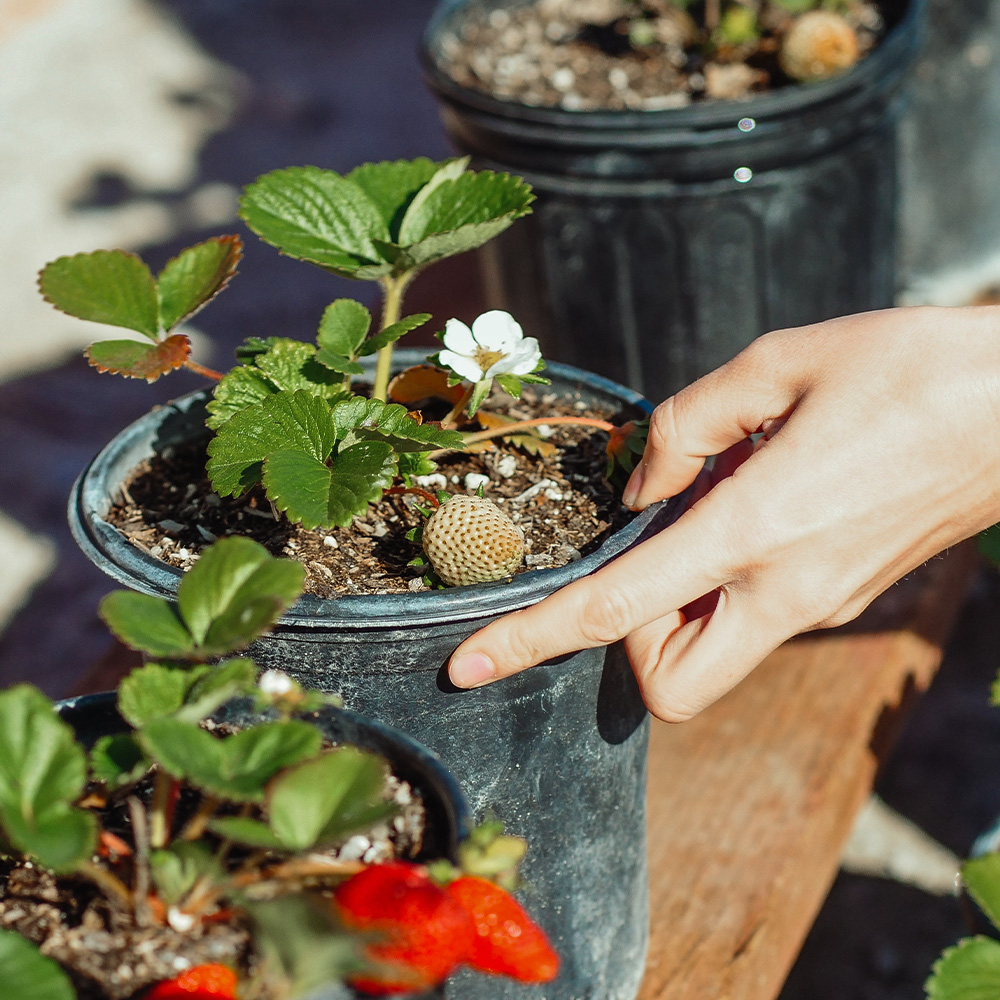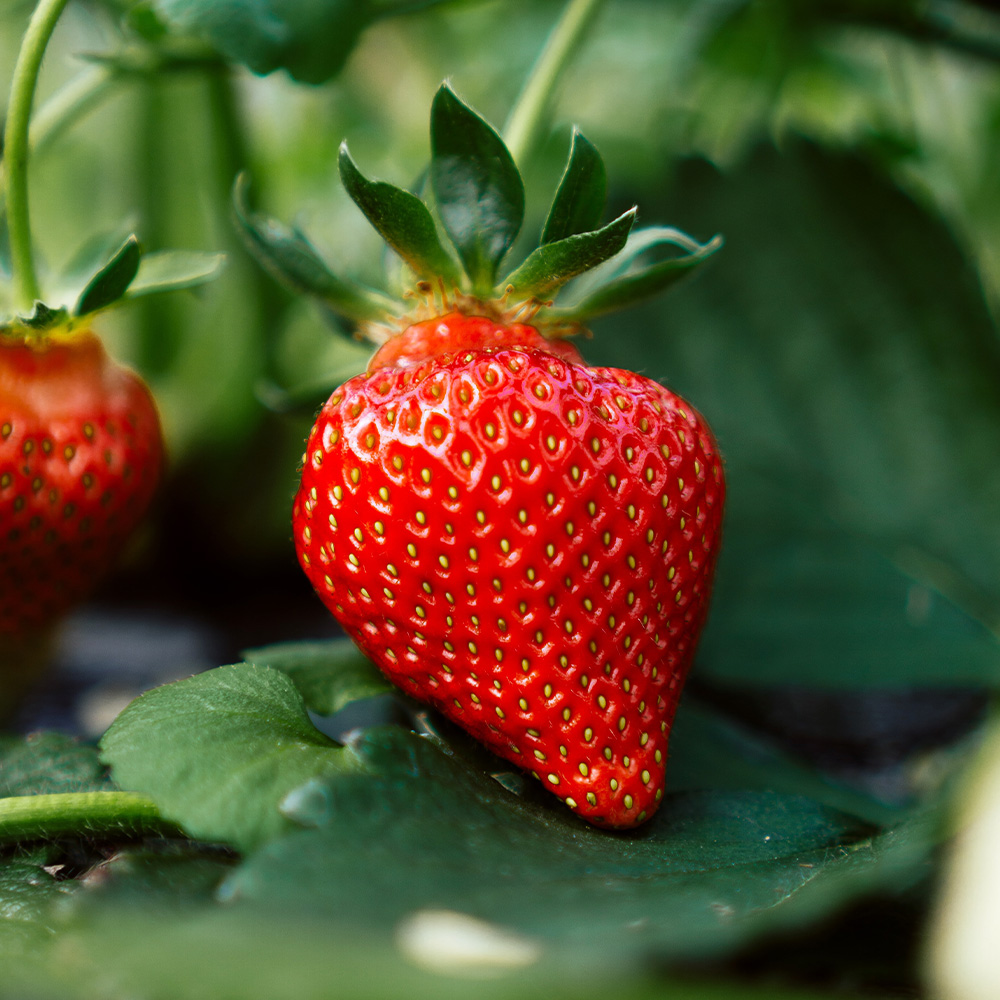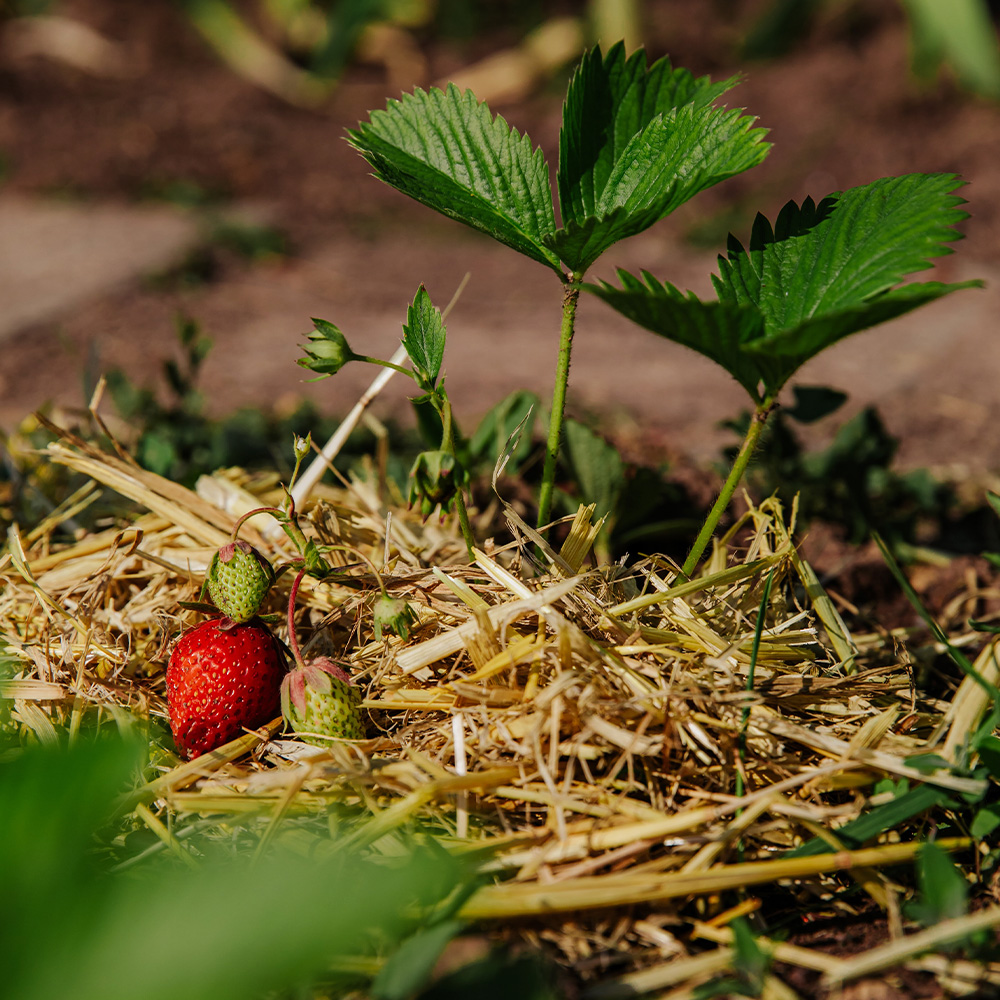Plan on adding fruit to your growing list this year? Strawberries are the perfect introduction to home-grown fruit production; they are fresh, juicy, sweet, and easy to grow. Since spring is strawberry planting season, now is the time to begin.
Let’s Dive Right In!
Strawberry Selection
We carry two types of strawberries:
June-bearing
This type of strawberry produces larger berries than the other two types from just one harvest spread out over a week or two in June. June-bearing varieties, like Sequoia, are the perfect choice for freezing, preserving, dehydrating, jam-jarring, wine-making, or anytime a large quantity of strawberries is needed.
Everbearing
Producing a crop in early summer, mid-summer (if conditions are cool), and finally, in late summer, Ever-bearing varieties form their flower buds when day length reaches 12 hours. They produce fewer and smaller berries than June-bearing varieties. Varieties include Eversweet, Seascape, and Quinalt.
Strawberry Planting
Plant strawberries in early spring as soon as the soil is workable. Choose a sunny site with loamy, well-draining soil. A pH between 6 and 7 is ideal. Strawberries will tolerate less-than-perfect conditions and do okay in partial shade; however, the harvest will be less plentiful.
Heavy clay soil with poor drainage is particularly detrimental to a strawberry patch. Because soil drainage is essential, raised beds are often used to grow strawberries. Filling a new bed with a quality raised bed mix or clean topsoil amended with at least four inches of compost will provide the perfect planting environment. If planting directly into the ground, work 4 to 6 inches of compost into the soil before planting. This will improve soil health, water retention, and drainage.
Strawberry rows should be approximately three and one-half feet apart, and plants should be spaced one and one-half feet apart. It is helpful to build a mound in the center of your planting hole and place plants before backfilling. Plant the crown even with the soil line. Avoid setting the plants too deep, or the crown will rot, or too shallow, lest the roots dry out. Firm the soil around each plant and water them well.
Strawberry Care
After planting:
- Mulch with straw or salt hay to reduce weeds, retain moisture, cool the soil, and keep fruit clean.
- Fertilize with G&B Tomato, Vegetable & Herb organic fertilizer.
If you’re seeking the freshest, best-tasting, healthiest strawberries, home-grown can’t be beaten! Give them a try this spring.




